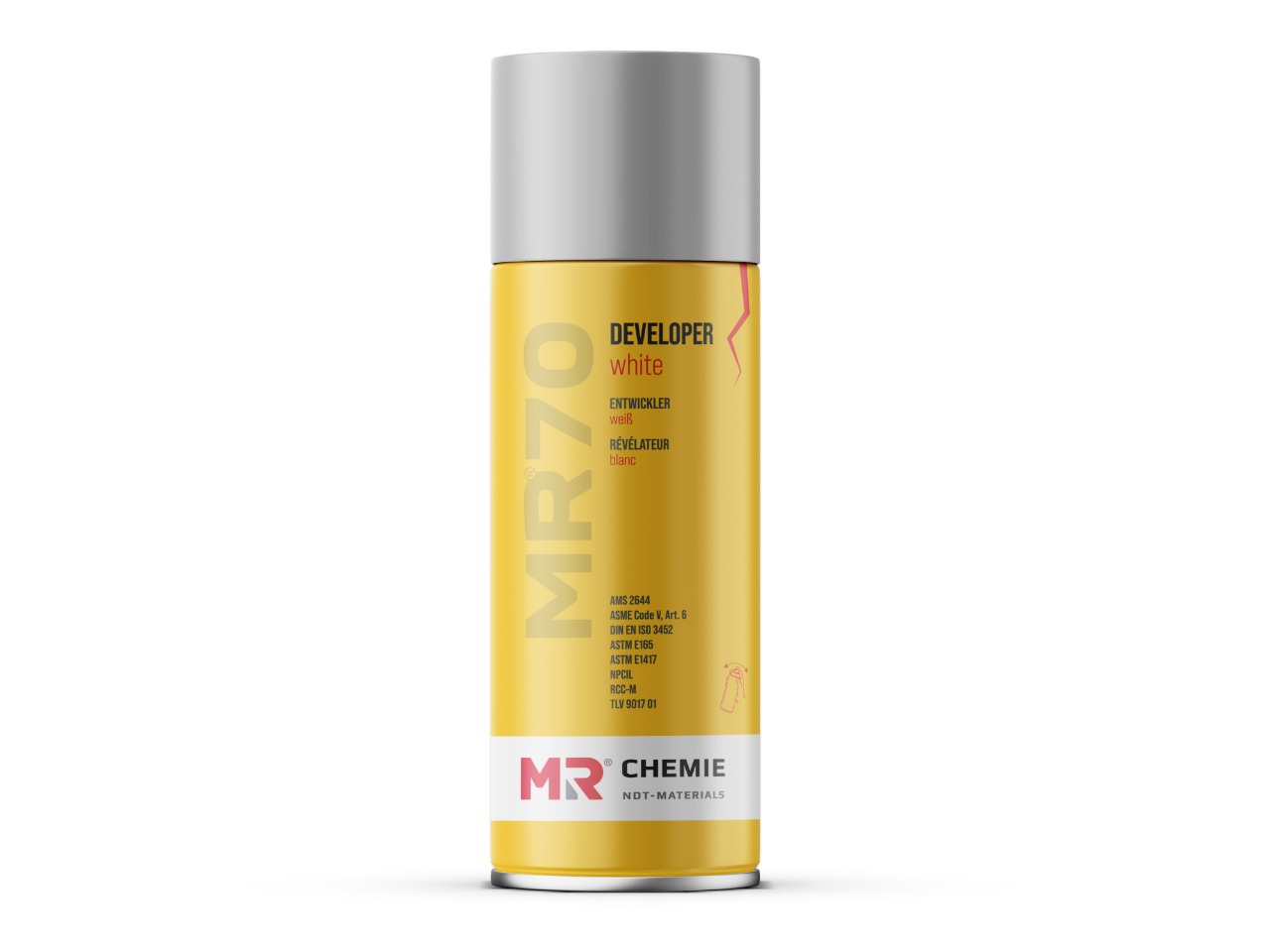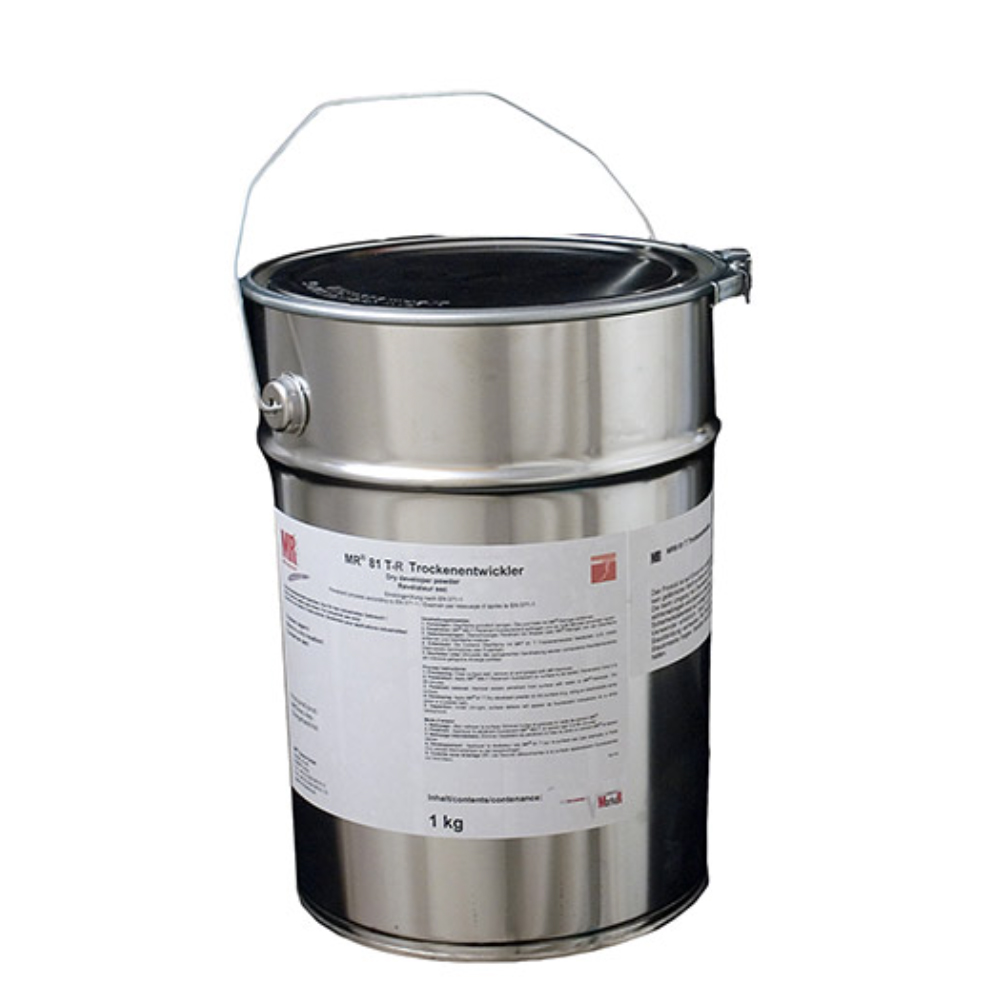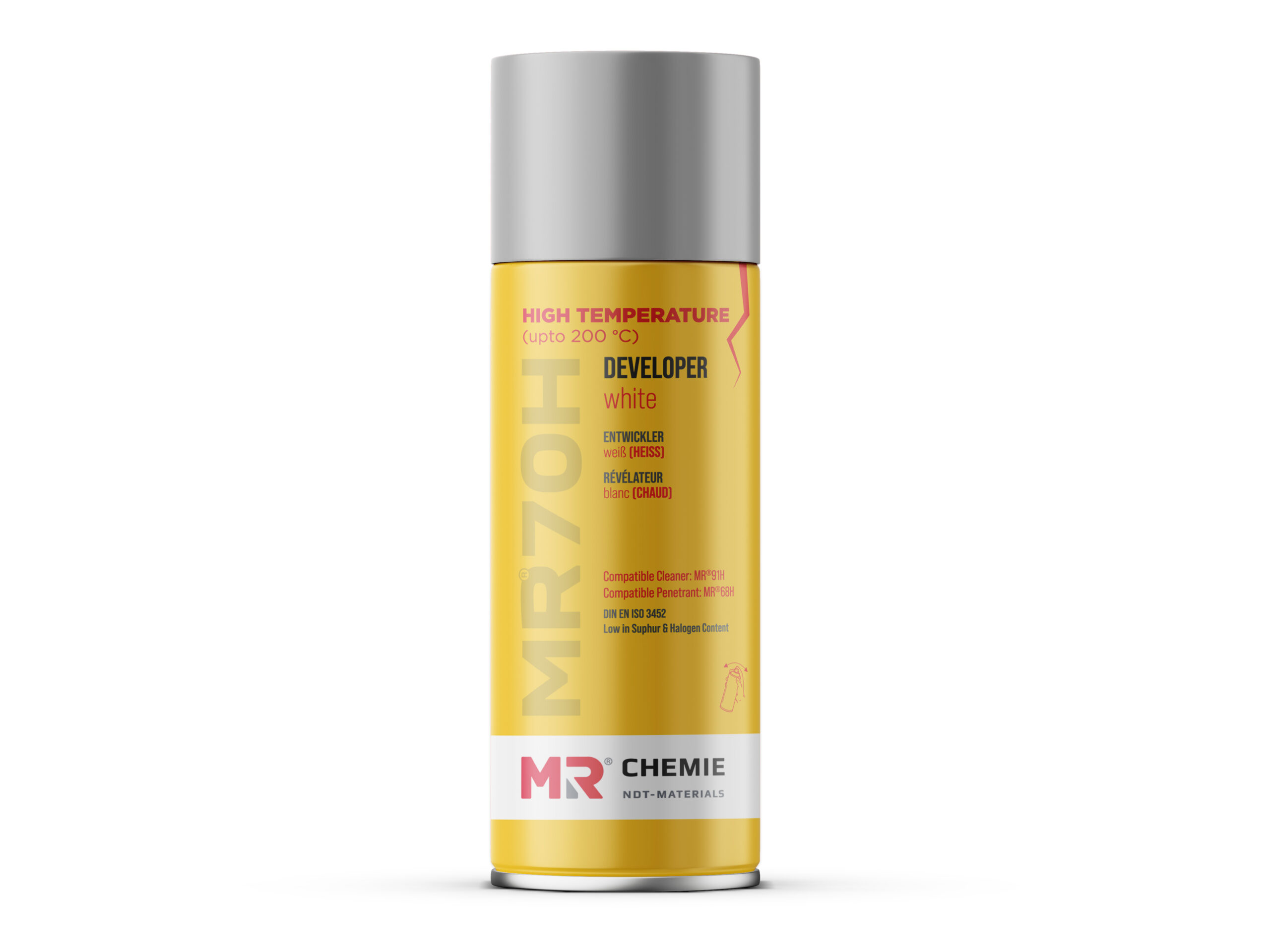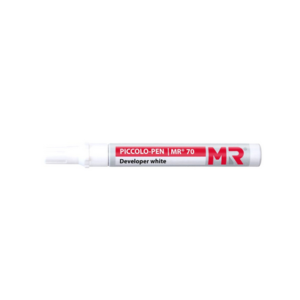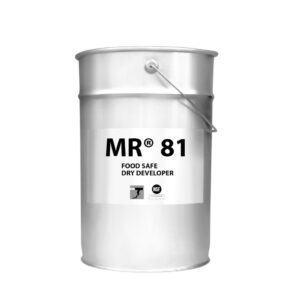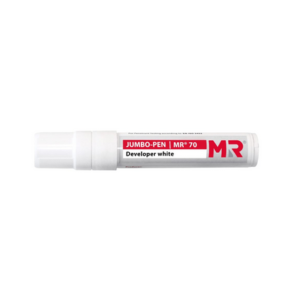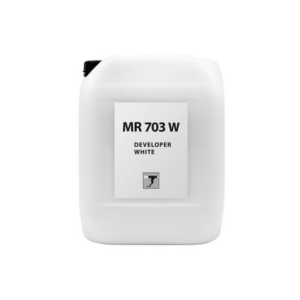MR®70H, Developer ‘hot’ – White, Non-Aqueous (high temperature ≤ 200°C)
MR®70H is a bright white, matte finish, non-halogenated, non-aqueous developer used to enhance the visibility of surface-breaking defects or discontinuities by producing an opaque coating during dye-penetrant inspection for high temperature applications upto 200°C.
| SKU | Pack Size | Case Size |
| 2511-0161 | Aerosol 400ml | 10 |
Additional information
| Properties | Appearance – white liquid |
|---|---|
| Approvals | ASME Code V, Art. 6 |
| Family Testing | Penetrant – MR68H |
| Recommended Usage | NDT Method – Dye Penetrant Testing for high temperature |
| Reference Test Blocks | Reference test block type 1 (Ni-Cr panel – 20µm, 30µm & 50µm) |
Features
- Bright white, opaque matte coating
- Quick dry
- Instant indications - high absorption effect
- Creates a thin homogeneous layer
- Easy to apply
- Sprayable format
- Shows clear indications
- Non toxic
- Suitable for all metals (suitability for plastics & ceramics requires testing prior to use)
- High temperature stability
- No smoke
How it Works
In non-destructive testing (NDT), a developer is a material that is used to enhance the visibility of surface-breaking defects or discontinuities. The developer is typically applied after a penetrant material has been applied to the surface of the material being inspected. The penetrant material will enter any surface-breaking defects or discontinuities (capillary action) and remain in the surface-breaking defects or discontinuities after the excess penetrant has been removed. The developer is then applied to the surface of the material, and it works by drawing the penetrant material out of any discontinuities or defects on the surface (reverse capillary mechanism). The developer forms a coating on the surface of the material, and it absorbs the penetrant material, which causes it to migrate to the surface and form a visible indication.GHS
Aerosol UN Model Regulation - UN 1950 AEROSOLS, 2.1FAQ
Q: What is high temperature penetrant testing?
A: High temperature penetrant testing is a non-destructive testing (NDT) method used to detect surface-breaking defects in materials that will be exposed to high temperatures. This testing technique uses a penetrant material that can withstand high temperatures, typically up to 392°F (200°C), and is ideal for use in applications such as aerospace, power generation, and automotive industries.
Q: What are the advantages of high temperature penetrant testing?
A: The advantages of high temperature penetrant testing include the ability to detect surface-breaking defects in materials that will be exposed to high temperatures, the ability to perform inspections without damaging the material being tested, and the ability to identify potential issues before they become more serious.
Q: What are the limitations of high-temperature penetrant testing?
A: The limitations of high temperature penetrant testing include the need for specialized equipment and trained personnel.
Q: What is the procedure for high temperature penetrant testing?
A: The procedure for high temperature penetrant testing typically involves surface preparation, penetrant application, excess penetrant removal, developer application and inspection. The specific procedure will depend on the material being inspected and the specific application.
Q: Can high temperature penetrant testing be used on all materials?
A: High temperature penetrant testing can be used on a wide range of materials, including metals, ceramics, and composites. However, the specific material being tested and the specific application may require the use of specialized penetrants and developers.
Q: What safety precautions should be taken during high temperature penetrant testing?
A: Safety precautions during high temperature penetrant testing include the use of personal protective equipment (PPE) such as heat-resistant gloves and goggles, the proper handling and disposal of chemicals, and the adherence to safety guidelines outlined in the NDT procedure.
